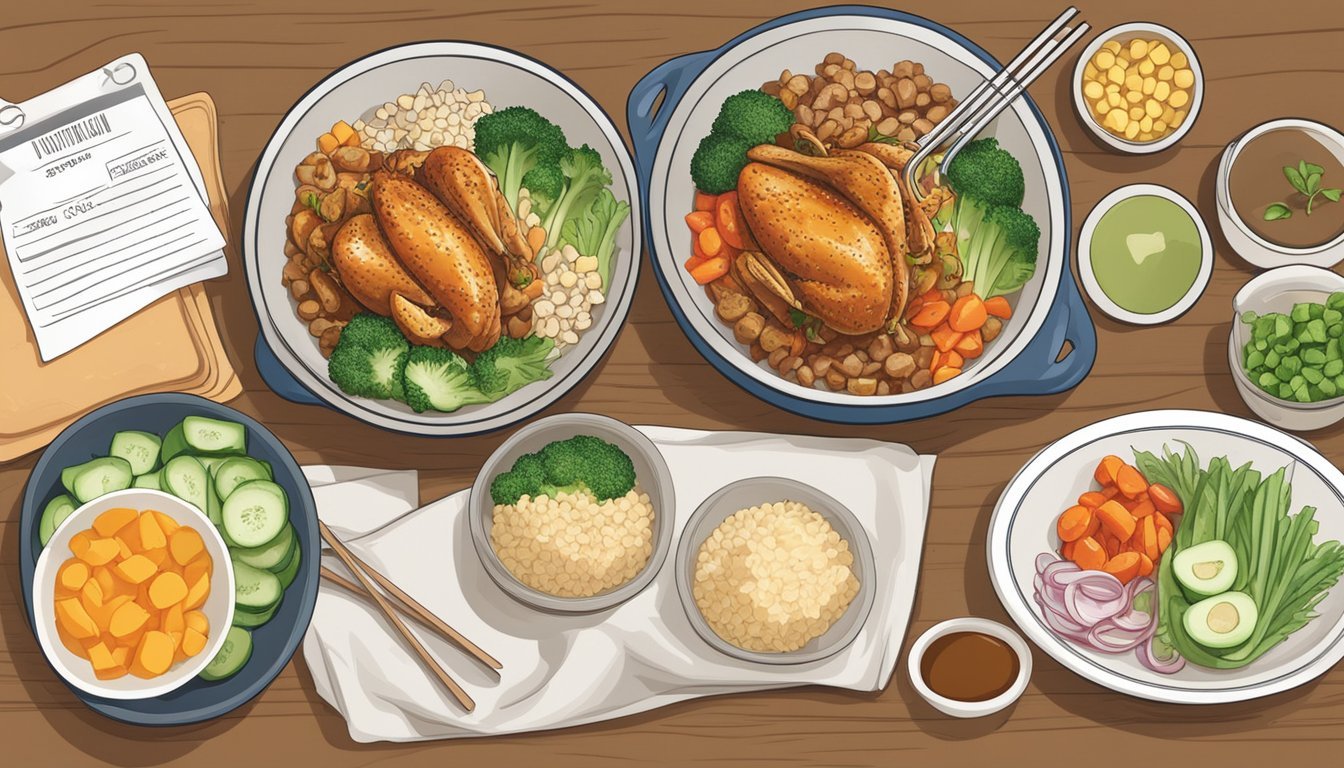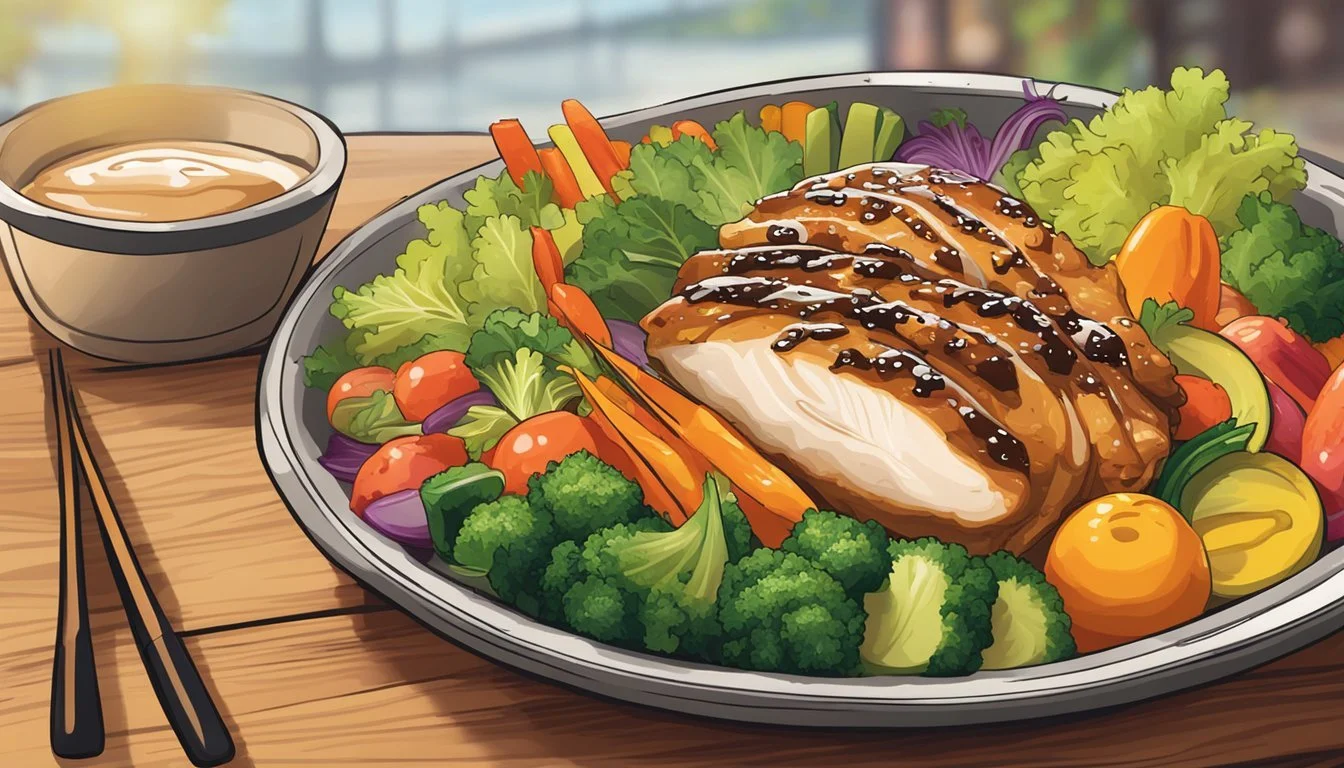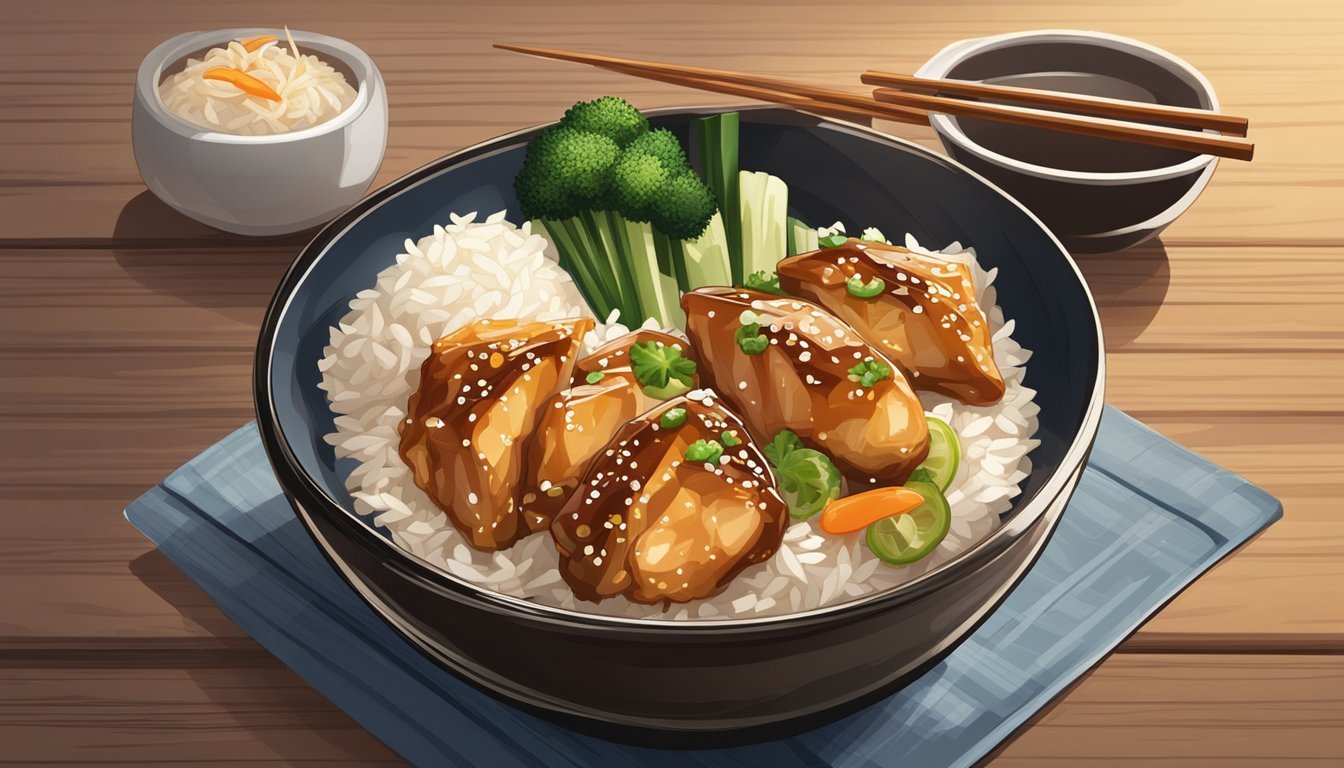How Long Do Chicken Teriyaki Bowls Last?
Storage Tips and Guidelines
Chicken teriyaki bowls are a popular and convenient meal choice that combines tender chicken, savory sauce, crisp veggies, and fluffy rice. Beyond their delicious taste, many people wonder about the shelf life of this dish after it’s been prepared. When stored properly in an airtight container in the refrigerator, chicken teriyaki bowls can last for up to four days. This makes them a great option for meal prepping and enjoying a healthy, protein-rich meal throughout the week.
Proper storage is key to maintaining the flavor and quality of chicken teriyaki bowls. Refrigeration slows down bacterial growth, ensuring that the chicken remains safe to eat while retaining its tenderness. The combination of rice, chicken, and vegetables should be kept at a consistent temperature to preserve the texture and taste of each component.
By understanding the storage requirements, you can maximize the lifespan of your chicken teriyaki bowls. This helps in enjoying a nutritious meal that is both satisfying and convenient. The balance of protein, healthy carbs, and veggies makes it a well-rounded option for various dietary needs.
Understanding Chicken Teriyaki Bowls
Chicken teriyaki bowls are a popular meal option that combines flavorful teriyaki sauce with a variety of ingredients, offering both nutritional benefits and savory satisfaction.
Components of a Chicken Teriyaki Bowl
A chicken teriyaki bowl typically includes several essential components. Chicken is usually the main protein, often prepared using either chicken breasts or chicken thighs. These are cut into bite-sized pieces and cooked with teriyaki sauce, a sweet and savory glaze.
The base of the bowl can vary. Common options include brown rice or cauliflower rice for a lower-carb alternative. Vegetables like carrots, broccoli, and green onions provide added nutrients and flavors.
Toppings such as sesame seeds and green onions enhance the visual appeal and add a slight crunch to the dish. Sometimes, additional elements like pineapple or cucumber are included for a refreshing contrast.
Health Considerations
Chicken teriyaki bowls are generally considered a healthy meal option. Chicken is a lean source of protein, essential for muscle repair and growth. When using brown rice or cauliflower rice, the dish provides beneficial fiber that aids digestion.
Vegetables included in the bowl, such as carrots and broccoli, offer vitamins, minerals, and antioxidants. These contribute to overall health and help in preventing chronic diseases. Homemade teriyaki sauce, as opposed to store-bought sauces, can be made with less sugar and sodium, making it a healthier option.
Portion control is important to keep the calorie count in check. Also, adding a variety of vegetables ensures a balanced intake of nutrients.
Preparation Techniques
Proper preparation of chicken teriyaki bowls involves cooking the chicken, making the teriyaki sauce, and assembling the bowl. Each step requires attention to detail to ensure the best flavor and texture.
Cooking the Chicken
Ingredients:
Chicken breasts or thighs
Olive oil or sesame oil
Salt and pepper
Start by patting the chicken dry with paper towels. This step ensures that it sears properly. Cut the chicken into 1-inch cubes for even cooking. Season the chicken with salt and pepper.
Heat the olive oil in a skillet over medium-high heat. Add the chicken in a single layer. If necessary, cook in batches to avoid overcrowding. Sear the chicken for 3-4 minutes per side until browned and cooked through. Transfer the cooked chicken to a bowl and cover it to keep warm.
Making Teriyaki Sauce
Ingredients:
Soy sauce
Sugar
Honey
Garlic, minced
Ginger, minced
Cornstarch
Water
In a saucepan over medium heat, combine the soy sauce, sugar, and honey. Stir until the sugar is dissolved. Add minced garlic and ginger to enhance the flavor.
In a small bowl, make a slurry by mixing cornstarch with water. Add this slurry to the saucepan to thicken the sauce. Stir continuously to avoid lumps. Cook the sauce for a few minutes until it reaches the desired consistency.
Assembling the Bowl
Ingredients:
Cooked chicken
Teriyaki sauce
Rice
Vegetables (e.g., bell peppers, snap peas)
Optional garnishes: sesame seeds, green onions
Begin by sautéing vegetables in a hot pan with a little olive oil for a couple of minutes until they are lightly cooked.
Scoop cooked rice into serving bowls. Add the sautéed vegetables and cooked chicken on top of the rice. Pour the warm teriyaki sauce over the chicken and vegetables.
For added texture and flavor, garnish with sesame seeds and chopped green onions. Serve immediately or store in an airtight container for up to 3 days.
Proper Storage and Shelf Life
Chicken teriyaki bowls last longer if stored properly.
To maximize shelf life:
Use airtight containers.
Refrigerate leftovers promptly.
Refrigeration helps keep the meal safe and maintains the quality of the ingredients.
In the refrigerator:
Chicken teriyaki bowls can last between 3 to 4 days.
Cooked rice and other components should be kept at appropriate temperatures to avoid spoilage.
For longer storage:
Freezing is an option.
Ensure the bowl is in a freezer-safe, sealed container.
Chicken teriyaki bowls can last up to 2 months in the freezer when properly stored.
Heat chicken teriyaki bowls thoroughly before consuming.
Ensure even heating by stirring, especially when microwaving, to avoid cold spots.
Notes on homemade vs. store-bought sauces:
Homemade teriyaki sauce, lacking preservatives, should be refrigerated and typically lasts 2-3 weeks.
Commercial teriyaki sauce may last longer and should be stored according to the packaging instructions.
Proper storage and handling are crucial to enjoy chicken teriyaki bowls safely, maintaining their taste and quality.
Nutritional Information
Chicken Teriyaki Bowls offer a balance of protein, fat, carbs, and sodium. Key nutritional components can vary significantly between homemade and take-out versions, affecting their health impact.
Caloric Content
A typical Chicken Teriyaki Bowl contains between 500-800 calories, largely dependent on portion size and ingredients. The chicken, teriyaki sauce, and rice contribute the most to this calorie count. For homemade versions, calories can be better managed by controlling portion sizes and ingredient choices. Opting for skinless chicken breast instead of thigh meat can reduce calorie intake. Additionally, substituting white rice with brown rice or quinoa can provide more fiber with fewer calories.
Sodium and Sugar Levels
Sodium and sugar content in Chicken Teriyaki Bowls can be high, primarily due to the teriyaki sauce. Store-bought teriyaki sauces can contain significant amounts of sodium (up to 600 mg per tablespoon) and sugar. Therefore, it is beneficial to use low-sodium soy sauce or coconut aminos as a healthier alternative. The use of artificial sweeteners or reducing the amount of sugar in homemade recipes can further decrease calorie and sugar intake. Monitoring and adjusting these ingredients can help make a Chicken Teriyaki Bowl fit better into a healthy diet.
Comparison with Take-Out Versions
When comparing homemade Chicken Teriyaki Bowls with take-out versions, homemade options often have the advantage in nutritional content. Take-out versions tend to use more oil, higher-sugar sauces, and larger portions, which increases caloric and sodium intake. Additionally, take-out versions may use saturated fats more liberally. Homemade versions allow for better control over ingredients, enabling the use of reduced-sodium soy sauce, minimal oil, and natural sweeteners. This makes homemade Chicken Teriyaki Bowls a healthier, more customizable option. For those who prefer take-out, requesting smaller portions or lighter sauce can help reduce excess calories and sodium.
Variations and Substitutes
Customizing chicken teriyaki bowls to suit dietary preferences or to add variety is easy. Alternatives include different proteins, low-carb options, various vegetables, and adjustments to the sauce.
Alternative Proteins
One can substitute chicken with tofu, shrimp, or salmon. Each brings a unique flavor and texture to the dish.
Tofu: Marinate firm tofu in the teriyaki sauce, then grill or pan-fry until golden.
Shrimp: Quickly marinate shrimp and sauté for 2-3 minutes on each side.
Salmon: Bake salmon at 400°F for 10-15 minutes after marination.
These proteins are versatile and absorb flavors well, making them excellent substitutes for chicken.
Low-Carb Options
For a low-carb version, replace white rice with cauliflower rice or quinoa.
Cauliflower rice: Finely chop cauliflower and sauté it until tender.
Quinoa: Cook according to package instructions, offers a higher protein content.
These alternatives provide a healthier base while maintaining the dish's integrity. Another idea is to serve the protein and vegetables on a bed of lettuce or cabbage for a fresh, crunchy texture.
Vegetable Add-Ins
Adding vegetables enhances the nutritional profile and flavor of the bowl. Popular options include:
Pineapple: Adds a sweet, tangy element.
Bell peppers: Provide a crunchy texture and vibrant color.
Cabbage: Shredded cabbage adds crunch and volume.
These vegetables can be stir-fried with the protein or steamed and served on the side. Incorporating a variety of vegetables ensures a more diverse and balanced meal.
Sauce Adjustments
The teriyaki sauce can be customized to meet dietary needs or taste preferences.
Tamari: Use tamari instead of soy sauce for a gluten-free option.
Vinegar: Add a splash for tanginess.
Brown sugar: Adjust sweetness with more or less brown sugar.
Pineapple juice: Incorporate for a fruity sweetness.
These adjustments allow for a personalized sauce that can enhance and complement various ingredients in the bowl.
Meal Prep Strategies
To maximize the shelf life of chicken teriyaki bowls, consider batch cooking, tips for individual servings, and best practices for reheating. These strategies help in maintaining flavor, texture, and nutritional quality.
Batch Cooking
Batch cooking saves time and ensures consistency in taste and texture. Chicken teriyaki bowls can be prepared in large quantities using a stovetop or an Instant Pot. Cooked chicken, rice, and vegetables such as broccoli florets, snap peas, and shredded carrots can be portioned out for the week.
Use airtight containers to store each component separately. This prevents sogginess and maintains freshness. Adding a drizzle of extra teriyaki sauce just before sealing helps keep the dish moist during storage.
Individual Serving Tips
When dividing meals into individual servings, consider a balance of ingredients in each container. Place a base of cooked rice, topped with equal parts chicken and a variety of steamed or stir-fried vegetables such as bok choy, edamame, and broccoli florets.
Using glass containers can help in retaining heat during reheating. Ensure each container has an appropriate portion of teriyaki sauce to maintain the dish's flavor. Label each container with the preparation date to monitor freshness.
Reheating for Best Quality
Reheating chicken teriyaki bowls properly is crucial for taste and safety. If using a microwave, cover the dish loosely to allow steam to escape, reheating on medium power for 2-3 minutes, stirring halfway.
For stovetop reheating, add a splash of water or extra sauce to prevent sticking. Heat on medium-low, stirring occasionally until warmed through. Avoid using high heat as it can dry out the chicken and make vegetables mushy.
Serving Suggestions
For an exceptional chicken teriyaki bowl, consider integrating additional elements that elevate the flavor and presentation. Complementing your bowl with well-paired sides and thoughtful garnishes can enhance your meal experience.
Accompaniments and Side Dishes
Including steamed or roasted vegetables such as broccoli, carrots, or bell peppers provides a nutritious balance to the bowl. Fresh veggies add both color and texture. Alternatively, you can serve the bowl with a side of quinoa or brown rice for a more nutritious option than white rice.
Another great side dish is a light Asian cabbage salad, which adds a crunchy texture. For protein variety, tofu or shrimp can be substituted based on dietary preferences.
Garnishes and Final Touches
Enhance the visual and flavor profile with sliced green onions and cilantro. Toasted sesame seeds or black sesame seeds offer a nutty nuance and added crunch. For a touch of heat, a sprinkle of red pepper flakes can be added.
Finally, drizzle a bit of extra homemade teriyaki sauce and add a wedge of lime for a zesty finish. Optional garnishes like pickled ginger or nori strips can be included for an authentic touch. Keep the garnishes simple to not overpower the primary ingredients.








